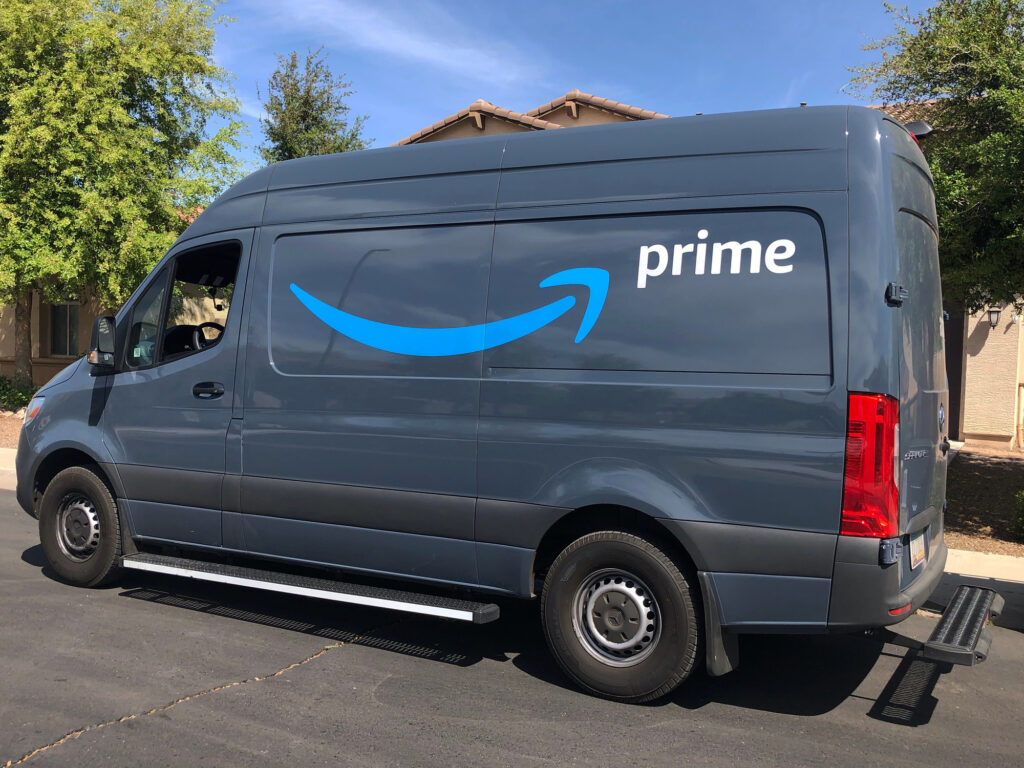
Companies like Amazon use last mile delivery services to ensure their products get to customers on time—but what is Amazon’s last mile delivery process? While major shipping companies and retailers often contract with third-party last mile delivery services, Amazon has created their own.
Over the past two years, the demand for Amazon delivery has grown exponentially. Thanks to the COVID-19 pandemic, more people than ever started shopping online—and many of them are still shopping online with greater frequency than they used to. From household items to groceries, here’s an overview of Amazon’s last mile delivery services.
Why do companies use last mile delivery?
“Last mile” is a bit of a misnomer. A last mile delivery service isn’t limited by a mile radius. It’s simply a logistics term to describe the last leg of any delivery’s journey. Companies ship packages to a local transportation hub. When the package arrives at the hub, a last mile carrier—whether third-party or in-house—picks up the delivery and takes it to its final destination.
One of the biggest reasons to deliver through last mile carriers is customer service. Consumers are now used to free, fast shipping on everything from same-day grocery orders to major appliances. Because the volume of online purchases has skyrocketed, last mile delivery services enable efficient transportation and delivery.
In turn, this builds customer loyalty, helps keep shipping costs down and builds a better reputation for the company.
What kind of last mile delivery does Amazon use?
While many retailers and shipping companies use third-party last mile delivery services, Amazon has created their own. In 2019, the company spent $35 billion on shipping costs—$10 billion in the holiday quarter alone. Clearly, Amazon has a vested interest in keeping cost down, delivering packages quickly and standing out among competitors.
Here are some of the innovative last mile services Amazon has introduced or is trying:
- Prime Air: Plans for a drone delivery service made the news several years ago. Prime Air has the FAA’s blessing to research and develop delivery drones—your future Amazon orders might just come from the sky. This may be a way off, however: TechTarget reports that “Amazon officials… said their goal for Prime Air drones would be to fly above 200 ft and below 500 ft. The company said its drones would carry packages weighing up to 55 lbs and travel within a radius of 10 miles from its distribution centers.” The program has been in development since 2015, and so far, drone delivery is not widely available, if at all.
- Delivery service partner programs: In an effort to expand their last mile delivery service, Amazon invested in their delivery service partner (DSP) programs. The company works with small, independent owners to create a DSP. Owners invest $10,000 and assemble a team, while Amazon offers the technology and the package volume to get their business going. This is beneficial to Amazon, since they’ll have affordable last mile services at their fingertips.
- Robotic deliveries: Unmanned robotic delivery vehicles are becoming more popular these days, and Amazon has its fingers in that pie, too. Amazon Scout is the company’s robot delivery service. So far, the service has only been tested in Washington state.
- Amazon Fresh: While Amazon and Whole Foods have partnered for grocery delivery in recent years, the company went a bit further and established Amazon Fresh. Amazon Fresh offers free, same-day grocery delivery to Prime customers for orders over $35. The company uses their last mile delivery service to take groceries from the local warehouse to the customer’s home.
These innovations allow Amazon to stay on the cutting edge of last mile delivery. According to TechTarget, “One advantage Amazon holds over both Target and Walmart is that it can draw on capital from its other businesses, most notably its AWS cloud services where profit margins are significantly higher than those from its other e-commerce businesses.” The company has more money to invest in delivery service and innovation, so it can stay ahead of other major online retailers.
When it comes to last mile services, having that extra capital is crucial. For instance, grocery delivery with last mile service is expensive. The last mile service alone makes up 41 percent of the total shipping costs. Amazon’s investment in their own last mile delivery is bound to help keep costs down, and customers coming back.
Now you have the answer to the question, “What is Amazon’s last mile delivery?”—and can look forward to new delivery innovations from the ecommerce giant.

